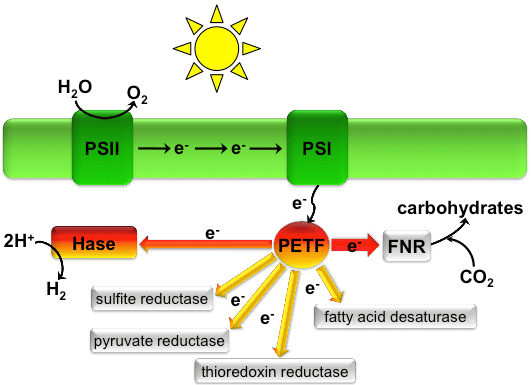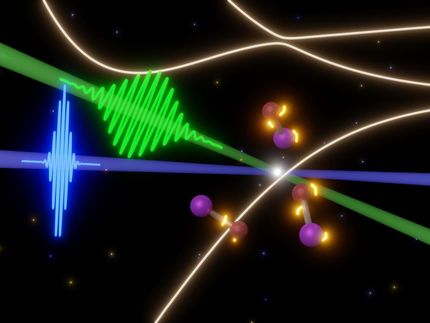A simple, easy-to-use method to break down pollutants in water
Chemists from Martin Luther University Halle-Wittenberg (MLU) have found out how stubborn pollutants in water can be disintegrated easily and cost-effectively. To do so researchers only need a green LED light, a catalyst and vitamin C. In this way, they can produce special types of electrons that reliably destroy the pollutants in the water. Until now, complex laser systems were required for this.
Researchers in photochemistry are working on the question of how light can be used to initiate chemical reactions. "The idea is that light penetrates a molecule and triggers a reaction there", says chemist Professor Martin Goez from MLU, whose research group developed the new process. Of particular interest are electrons, which are released by the light energy from their molecular compound in vitamin C and then exist freely in the water. "These so-called 'hydrated electrons’ are extremely reactive and can, for example, help break down pollutants. The advantage over other substances is that the electrons have completely disappeared after the reaction, meaning they do not leave any harmful residues", Goez continues. These special electrons can even react with very stable substances and break them down into their individual components.
Until now, expensive and complex high-power lasers were required to generate these types of electrons. Using this kind of equipment is also linked to strict safety precautions. In contrast, the development made by Goez’ team at MLU is significantly easier and more cost-effective. "Our system consists of a standard green light-emitting diode, traces of a metal complex that act as a catalyst and vitamin C. This method can be taught to undergrad students at a very early stage" says the chemist Goez. The research group tested the new method on chloroacetic acid, an extremely toxic and very stable substance. With their system, the researchers were able to destroy the compound into its harmless components. They were also able to demonstrate that their cost-effective alternative could generate just as many electrons as a high-power laser.
The development by the MLU’s research group is not only suitable for decomposing harmful chlorides or fluorides; the approach can be applied to many other photochemical reactions that are difficult to initiate by other means.
Original publication
Other news from the department science

Get the chemical industry in your inbox
By submitting this form you agree that LUMITOS AG will send you the newsletter(s) selected above by email. Your data will not be passed on to third parties. Your data will be stored and processed in accordance with our data protection regulations. LUMITOS may contact you by email for the purpose of advertising or market and opinion surveys. You can revoke your consent at any time without giving reasons to LUMITOS AG, Ernst-Augustin-Str. 2, 12489 Berlin, Germany or by e-mail at revoke@lumitos.com with effect for the future. In addition, each email contains a link to unsubscribe from the corresponding newsletter.
Most read news
More news from our other portals
Last viewed contents
Flame_test

Efficient production of hydrogen by algae
Food chain control - refined detection, improved assessment - 13th BfR Consumer Protection Forum on challenges in food and feed analysis in the face of the global flow of goods
Scientists at The University of Manchester have developed a new type of adhesive, which mimics the mechanism employed by geckos




























































